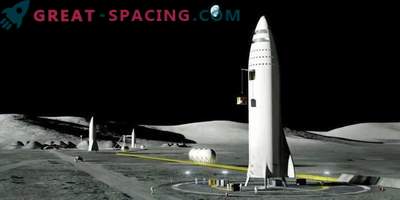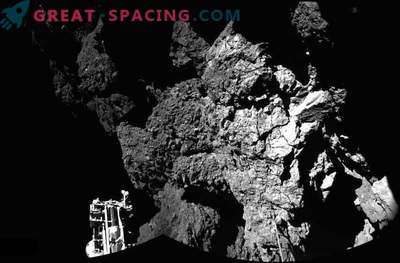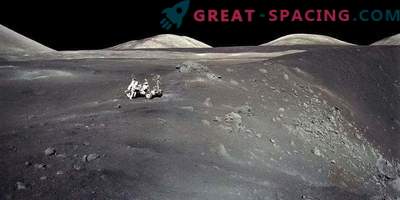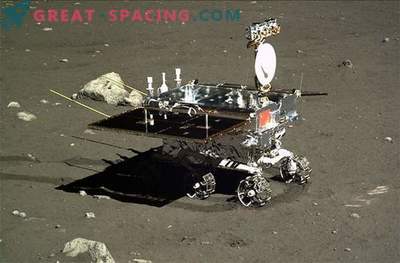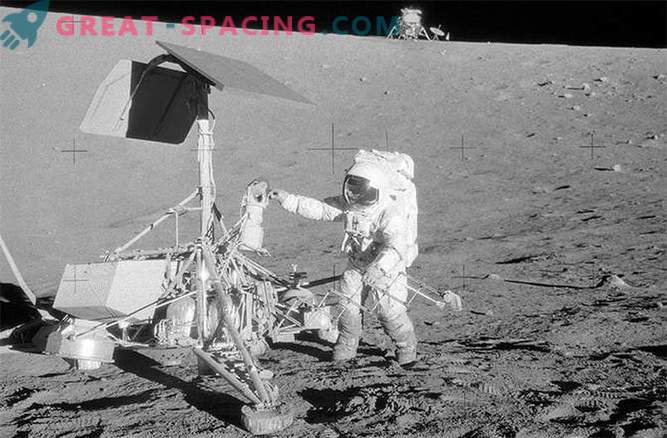
When NASA began developing the “Apollo” program, during which the astronauts were supposed to land on the Moon, no one was yet sure how to land the landing.
Many nuances have not yet been studied. For example, there was no detailed information about the surface of the moon, the possibility of a soft landing on the satellite, data about the payload of the spacecraft. In order to collect this data, NASA launched the “Surveyor” program during which it was planned to make a series of soft landings of an unmanned vehicle in order to collect the necessary information regarding the landing of people on the surface.
“Surveyor 3” became the second successfully landed apparatus in the course of this program and the only one whose fragments were found by people: its pieces were found by the crew of “Apollo-12”. The Surveyor program had three objectives: to develop and approve a soft landing technology for the Apollo, to collect data on the functionality of the Apollo lunar module in the environment, and finally to increase NASA's knowledge of the lunar surface as a whole. There were also secondary objectives, such as photographing the moon, which would help scientists choose suitable landing sites during manned flights.
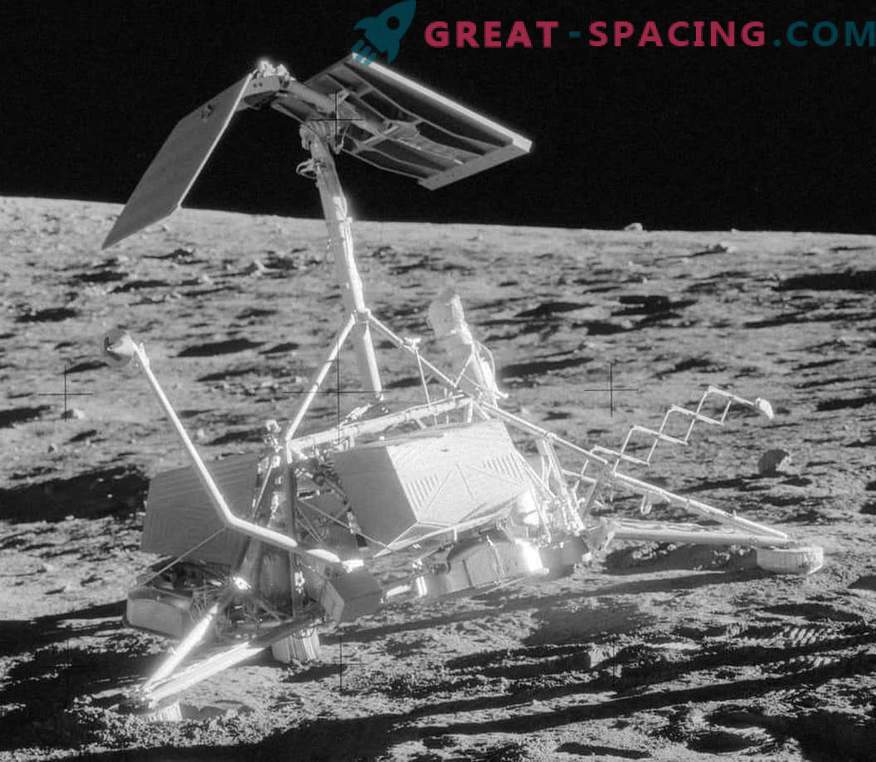
Surveyor 3
The spacecraft “Surveyor 3 ″ had a standard design. The main part - it contained the power plant, payload, flight control and communication systems - was equipped with three landing legs with shock absorbers and wide supporting parts. The entire landing module was just over 3 meters and weighed a little more than one ton. After the use of fuel due to the work of the brake engines during landing, the weight of the device decreased to 300 kilograms. During the mission of “Surveyor 3”, several changes were made to the original objectives of the project. In contrast to the two previous devices, the third was equipped with a camera, tools for studying the soil, measuring the temperature and reflectivity of the surface. After landing, the device was supposed to start broadcasting the image to Earth and make the necessary measurements.
NASA launched the Surveyor 3 from the Kennedy Space Center on April 17, 1967 using the Atlas Centaurus launch vehicle. After a brief stop in near-earth orbit, the rocket was restarted to deliver the spacecraft to the moon, where it arrived 3 days later, on April 20. At 75 kilometers from the surface, at a speed of 2625 meters per second, brake engines were launched, which slowed the speed of the ship to 140 meters per second. Further descent was carried out with the help of Doppler radars and radio altimeters.

A few seconds before landing, the radar stopped working due to strong interference from the landing site. The guidance system went into inertial mode, finally the unit could only be moored from the third time, stopping on the 14-degree slope of one of the craters in the Ocean of Storms. Within an hour, “Surveyor took the first pictures, and two days later, soil samples were taken.
The work of “Surveyor 3” lasted for a full lunar day (two terrestrial weeks), during the lunar sunset on May 3, 1967, the connection with the apparatus was interrupted, and at the end of the lunar night was not restored. During the mission, the device spent 18 hours and 22 minutes, digging small grooves for the study of the soil, and also took 6,326 shots. In addition, the device has collected a lot of new data on the density, texture and structure of the lunar surface.
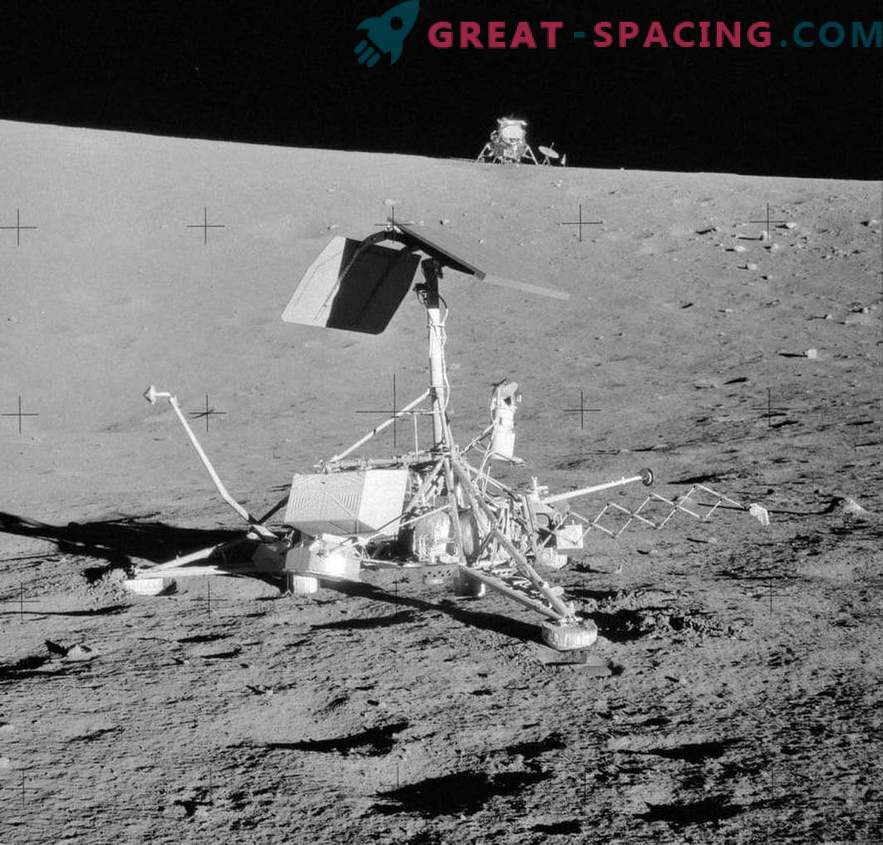
However, after losing contact with “Surveyor 3,” his story did not end. On November 19, 1969, the Apollo 12, demonstrating amazing accuracy for the second manned mission, landed less than 200 meters from the Surveyor. The unit was visited by commander Pete Conrad and pilot Al Bean during the second exit to the surface. They examined the “Surveyor 3 ″ and its landing site, and then removed about 10 kilograms of equipment from it, which was returned to Earth. Among these parts was a television camera, which is now on display at the National Museum of Aviation and Cosmonautics of the Smithsonian Institution in Washington.
In general, the “Surveyor” program included seven launches of unmanned vehicles on the moon and cost $ 469 million. During the program, a huge amount of valuable data was collected that played an important role in the implementation of the Apollo program. The missions of the “Surveyor 3” and “Apollo 12” were recognized by NASA as fully successful.


